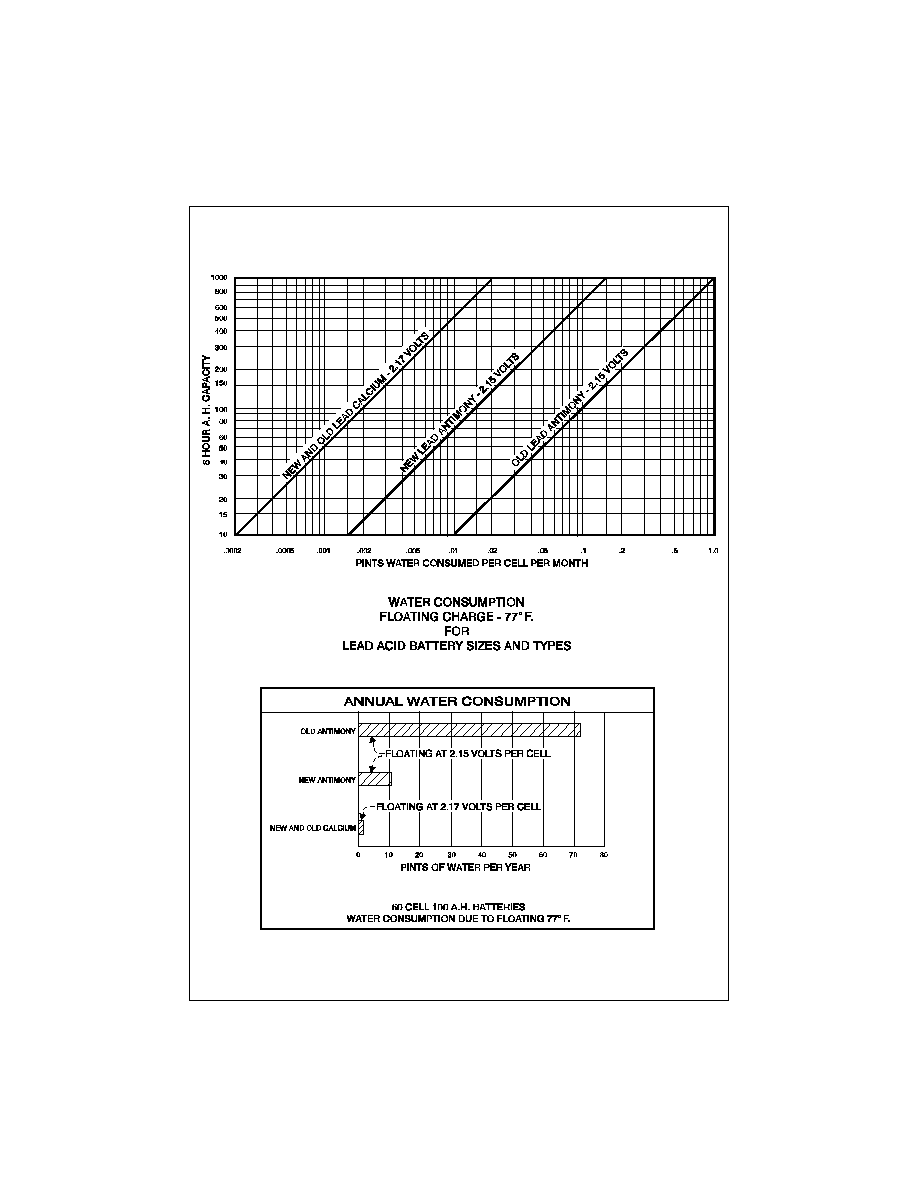

26
Rev.12/31/97
3. BATTERY TESTING
The purpose of this section is to describe recommended testing procedures
and intervals. Information herein consists of guidelines only and is not
intended to replace manufacturer's recommendations. Follow
manufacturer's information if a conflict between these guidelines and
manufacturers information is encountered.
and intervals. Information herein consists of guidelines only and is not
intended to replace manufacturer's recommendations. Follow
manufacturer's information if a conflict between these guidelines and
manufacturers information is encountered.
3.1 ACCEPTANCE TESTING
3.1 ACCEPTANCE TESTING
Acceptance testing should be performed no sooner than 1 week after the
battery has had its initial freshening charge (see section 1.2 A). This test
may be done at the factory before shipping if specified. This test should be
at least a 3-hour discharge test and should provide at least 90 percent of
rated capacity. An 8-hour discharge test for acceptance is preferred, and 90
battery has had its initial freshening charge (see section 1.2 A). This test
may be done at the factory before shipping if specified. This test should be
at least a 3-hour discharge test and should provide at least 90 percent of
rated capacity. An 8-hour discharge test for acceptance is preferred, and 90
percent of rated capacity should be required.
3.2 CAPACITY TESTS TO DETERMINE REPLACEMENT
3.2 CAPACITY TESTS TO DETERMINE REPLACEMENT
To establish whether a battery is nearing the end of its useful life, load test
the entire battery as outlined below at 5-year intervals. This test should be
repeated annually if the capacity has dropped below 90 percent.
repeated annually if the capacity has dropped below 90 percent.
A.
A. After the battery has been fully charged by equalizing, return it to float
service for at least 72 hours, but less than 30 days before performing the
test.
test.
B.
B. Check all battery connections with a micro-ohmmeter to ensure
connections are clean and low resistance. An IR camera may be used
just after the discharge test has begun to check the connections.
Temperature will be higher on poor connections. If poor connections are
found, stop the test and repair the connections before continuing.
just after the discharge test has begun to check the connections.
Temperature will be higher on poor connections. If poor connections are
found, stop the test and repair the connections before continuing.
C.
C. Record the specific gravity and voltage of each cell just prior to the test.
D.
D. Record the temperature of the electrolyte of 10 percent or more of the
cells (an IR camera may be used and the temperature of cell cases may
be recorded) to establish an average temperature.
be recorded) to establish an average temperature.
E. Record the battery terminal float voltage. Use an accurate digital
voltmeter.
F.
F. Take precautions to ensure that a battery failure will not jeopardize other
equipment. Discharge the battery through a suitable resistor and an
ammeter for 3 hours at rated 3-hour discharge current. Leave the
charger in normal float operation and record each cell voltage every half-
hour during discharge. Watch closely during the last hour and time the
exact end point accurately. After ambient temperature correction to
77°F, if the minimum voltage of 1.75 in any cell is reached before 3 hours
ammeter for 3 hours at rated 3-hour discharge current. Leave the
charger in normal float operation and record each cell voltage every half-
hour during discharge. Watch closely during the last hour and time the
exact end point accurately. After ambient temperature correction to
77°F, if the minimum voltage of 1.75 in any cell is reached before 3 hours